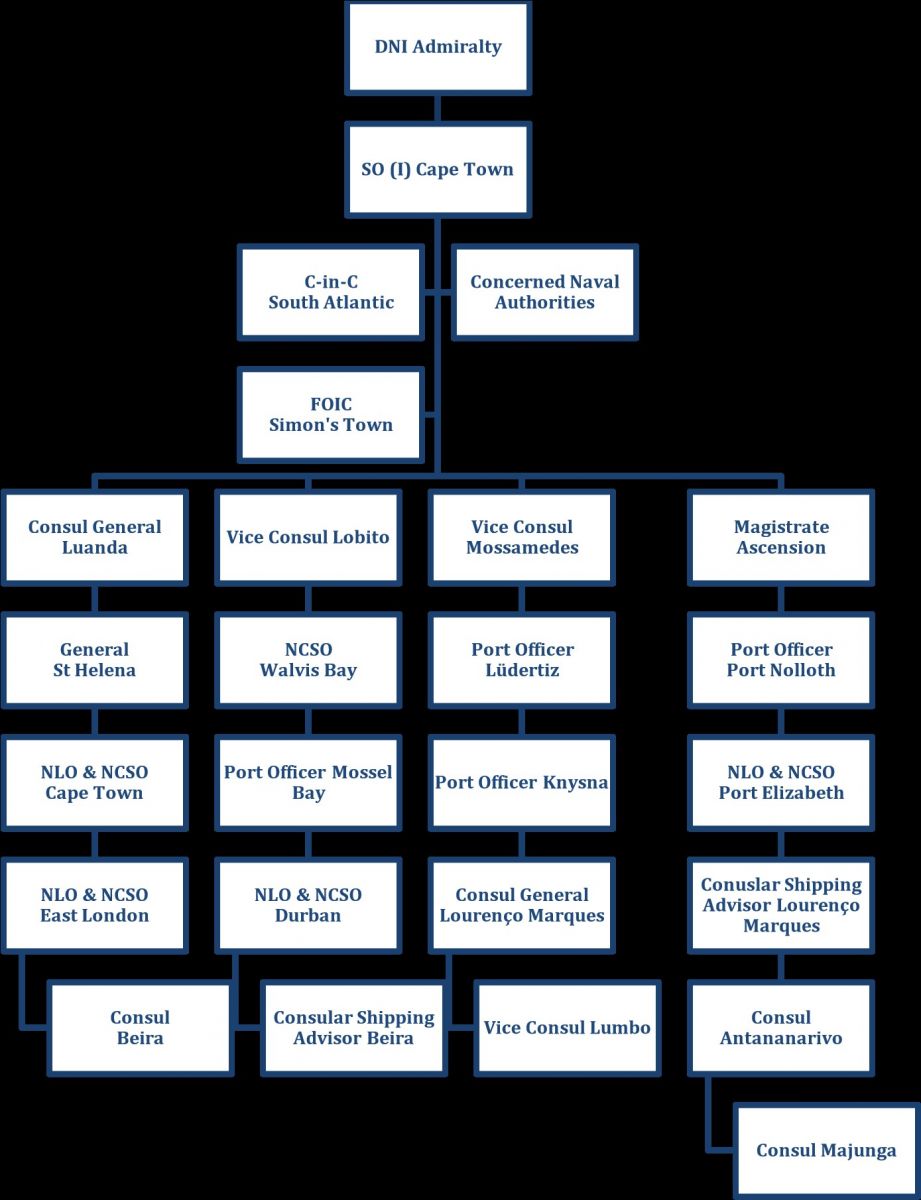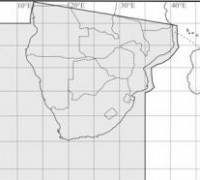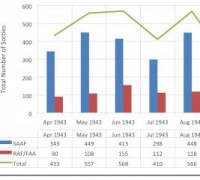THE AXIS AND ALLIED MARITIME OPERATIONS AROUND SOUTHERN AFRICA 1939 1945 - WAR ON SOUTHERN AFRICA SEA
27)THE OPER INTELLIGENCE SECTION
The Operational Intelligence Section
By November 1940 the formation the Enemy Reports Department (ERD) at the CNIC had led to the centralisation of all operational intelligence from SIGINT. This intelligence included information on Allied and neutral warships, merchant shipping and convoys, as well as German, Italian and Japanese surface raiders, warships, submarines and blockade runners in South African waters. The officer in charge of this department was known as the Enemy Reports Officer. This officer concurrently acted as the Boarding Officer and the Naval Liaison Officer to all Allied warships calling at Cape Town.
The staff of the ERD kept a constant plot of all Axis and Allied shipping movements in the Cape Intelligence Area, as well as in adjoining areas. The department obtained the required information from HF/DF bearings. These were received from the SO “Y” and his organisation, as well as from enemy reports obtained from RRR, QQQ and SSS messages passed along by Allied merchant shipping. In some instances, the boarding of shipping in Cape Town harbour supplemented these reports.[1]
The staff of the ERD painstakingly sifted through all information received, and regularly published a Cape Area Naval Intelligence Pamphlet. Copies of the pamphlets, commonly known as ‘Enemy Reports’, were circulated among all Allied vessels which called at Cape Town, Simon’s Town, East London, Port Elizabeth, and Durban. These pamphlets contained a wealth of information on the Axis shipping operational in the Cape Intelligence Area. They included possible sketches and photographs of the vessels, along with full particulars of tonnage, fuel capacities, and last known movements. These reports proved extremely valuable for RN and South African Naval Forces (SANF) vessels hunting Axis merchant raiders, submarines, and blockade runners during the war, and also when investigating suspicious vessels at sea.
Following the establishment of close liaison between the Coastal Area Command and CNIC in 1941, regular contact was maintained between the ERD and a South African Air Force (SAAF) Intelligence Officer at headquarters. This led to the establishment of a system of photographing all merchant shipping in South African waters, which helped to identify certain suspicious vessels. The Enemy Reports Officer also proved instrumental in the requisitioning of Vichy shipping at East London and Port Elizabeth during the war.[2]
The ERD carried out the above duties until August 1942, whereafter Ransome and his staff moved to the Combined Headquarters in Cape Town. The Operational Intelligence Department (OID) hence assumed responsibility for all operational intelligence, and worked in close liaison with Bennet and his “Y” Organisation in this regard. Through direction finding bearings, sighting reports, and from sinking reports, these two departments managed to compile fairly accurate tracking charts of all U-boats operational in South African waters.[3] After the commencement of the sustained German U-boat offensives in October 1942, the OID also helped to interview and interrogate the survivors of sunken merchantmen. This work continued unabated until mid-1943, when the German U-boat attacks gradually ceased. As a result, the OID drafted a comprehensive report on U-boat attacks in South African waters for the Admiralty.[4]
Throughout this period, the OID cooperated closely with the Naval Operations Department and War Room at Combined Headquarters, as well as with the General Officer Commanding (GOC) Coastal Area Command and his Intelligence staff. The result was a comprehensive report on the movements of all Axis naval vessels in the area, which greatly assisted the RN, SDF/SANF, SAAF and Royal Air Force in providing adequate cover for, and routing of, merchant convoys. It also allowed for the launching of combined operations against all Axis naval vessels operational in South African waters.[1] By 1944 the OID produced fortnightly intelligence summaries, which detailed all U-boat attacks on merchant shipping in South African waters. These reports included all sightings, counter-attacks by surface units or aircraft, direction finding bearings and all daily dispositions given through by the Admiralty. The ERD and OID rendered sterling service throughout the course of the naval war in the Cape Intelligence Area.[2]

Wartime organisation of the Cape Intelligence Area Reporting Officers
[1] TNA, ADM 1/31006. History and Organisation of the Naval Intelligence Centre Cape Town. Operational Intelligence; TNA, WO 208/5111. South Africa General. South Atlantic ‘Y’ Organisation, 12 Dec 1942.
[2] TNA, ADM 1/31006. History and Organisation of the Naval Intelligence Centre Cape Town. General Organisation and Expansion from Peace to War Footing; TNA, ADM 1/31006. History and Organisation of the Naval Intelligence Centre Cape Town. Operational Intelligence.
[3] TNA, ADM 1/31006. History and Organisation of the Naval Intelligence Centre Cape Town. Operational Intelligence.
[4] TNA, ADM 1/31006. History and Organisation of the Naval Intelligence Centre Cape Town. Operational Intelligence.
[5] TNA, ADM 1/31006. History and Organisation of the Naval Intelligence Centre Cape Town. Appendix II.
[6] Kleynhans, ‘Good Hunting’, pp. 179-183.



